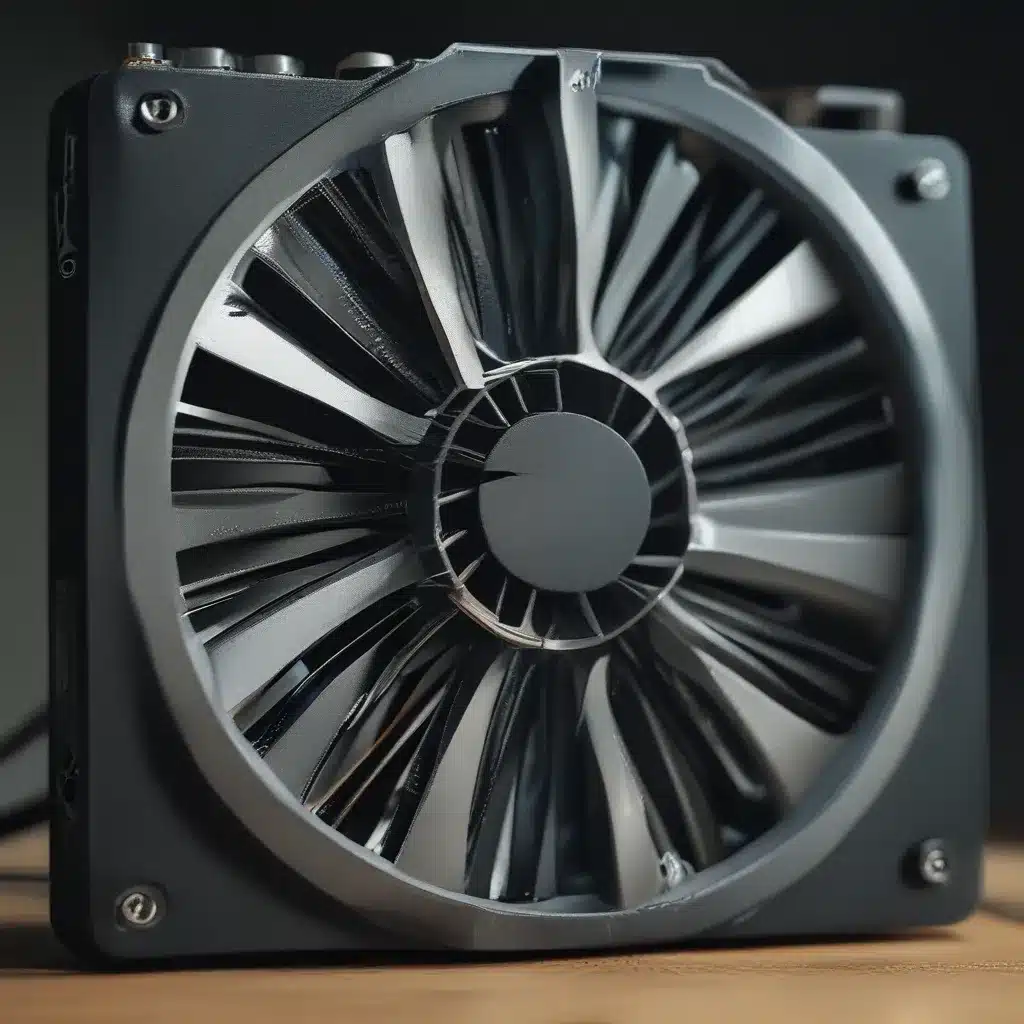
Shhh… Can You Hear That?
Have you ever been in the middle of an intense gaming session or a crucial work project, only to be suddenly interrupted by the deafening whir of your computer’s fans? It’s like having a jet engine take off right next to your ears! If you’re anything like me, that incessant noise can be enough to drive you straight into a Ridley Scott-esque nightmare.
But fear not, my fellow PC enthusiasts! I’m here to share with you a simple, cost-free trick that can help you put an end to that fan-fueled symphony of doom. It all starts with a quick trip into the BIOS (Basic Input/Output System) of your trusty machine.
The Hidden Treasure in Your BIOS
As it turns out, nearly every motherboard manufactured in the last decade or so has a built-in set of sensors that can monitor the various temperatures around your computer’s case. Even better, these sensors have the ability to throttle your case fans accordingly, slowing them down when everything is running smoothly and ramping them up only when necessary.
The problem is, for some strange reason, the default setting in the BIOS is often not configured to take advantage of this nifty feature. In fact, the older your motherboard is, the more likely it is that this setting has been left turned off. But fear not, my friends, because with just a few clicks, you can unlock the secret to a blissfully silent computing experience.
A Quick BIOS Detour
To get started, simply restart your computer and start mashing that F2 or DEL key (depending on your motherboard’s settings) as soon as you see the initial boot sequence. This will take you straight into the BIOS, where you can use the cursor keys to navigate to the “Hardware Monitor” section.
Once you’re there, you should see a readout of the various temperatures and fan speeds that your motherboard is keeping tabs on. Somewhere in this menu, there will be a setting for the CPU fan, often labeled with phrases like “Q-Fan” or “Extreme.” This is where the magic happens.
By default, this setting is usually configured to run your CPU fan at a constant, high-speed setting, which is great for keeping your processor cool but not so great for keeping the noise down. Instead, you’ll want to adjust it to a more modest, “quiet” maximum speed. That way, your fan will only rev up when your CPU is under heavy load, and it’ll otherwise stay nice and hushed.
The Beauty of Automatic Cooling
The best part about this BIOS tweak is that it’s self-regulating. Once you’ve set your CPU fan to the quietest maximum speed, you can rest assured that it won’t let your processor overheat, even during those intense gaming sessions or rendering marathons. The fan will automatically kick into high gear whenever the temperature starts to creep up, ensuring that your rig stays cool and stable without all the racket.
And if you’re not the type who enjoys tinkering around in the BIOS, fear not – there’s an excellent Windows app called SpeedFan that can do the same job for you, right from the comfort of your desktop. Just be aware that you may need to manually reset the settings after every reboot.
Silence is Golden
With these simple BIOS or SpeedFan adjustments, you can say goodbye to the deafening roar of your PC’s fans and hello to a blissfully quiet computing experience. No more interruptions, no more headaches – just smooth, seamless productivity or gaming, all accompanied by the soothing hum of your now well-behaved hardware.
And if you’re really looking to take your quest for silence to the next level, there are plenty of other tips and tricks you can try, like swapping out old fans for newer, quieter models, adding sound-dampening foam to your case, or even upgrading to a solid-state drive (SSD) to eliminate the noisy spinning of traditional hard drives.
So what are you waiting for? Head into your BIOS, fire up SpeedFan, or check out our website for even more ways to quiet down that noisy PC of yours. Your ears (and your sanity) will thank you.












